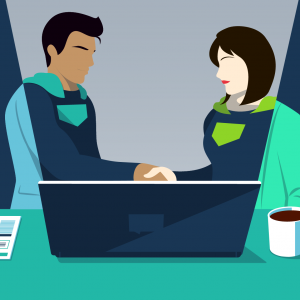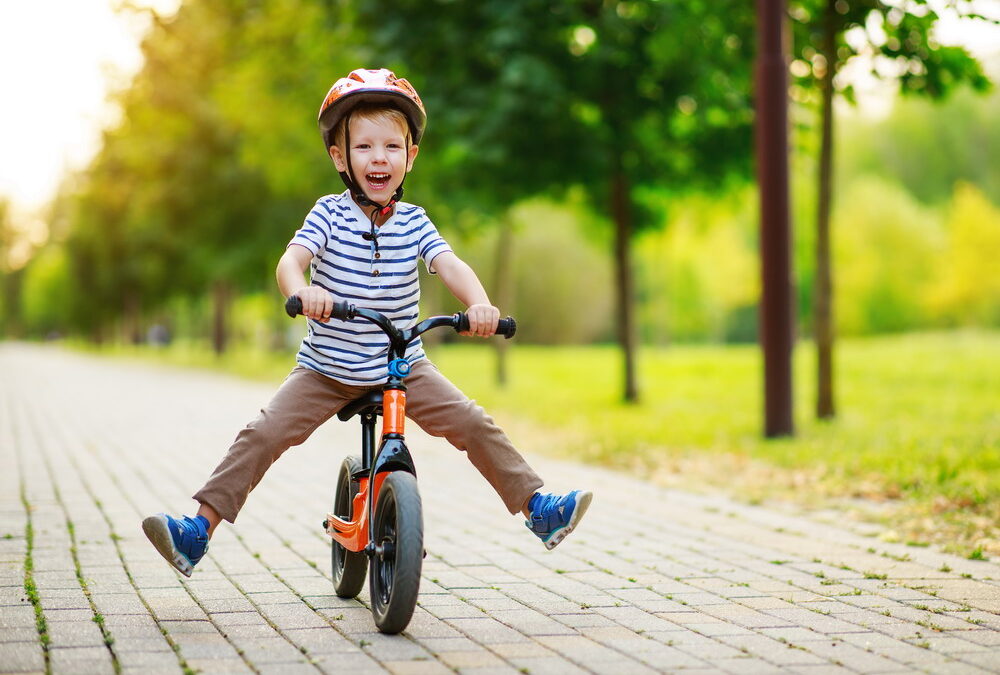According to the experts at Woom, a balance bike for kids is perhaps the best tool for teaching youngsters to ride a bike. Unlike children’s bikes with training wheels, balance bikes have no pedals and nothing to keep the bike upright. But the absence of these training wheels is what teaches children to develop their balancing skills as soon as they get on their first bike. Balance bikes make the transition to pedal bikes much easier because mastering balance is typically the hardest part of learning to cycle without stabilizers. So, how do you find the best balance bike for your child?
What Should a Balance Bike Have?
Although typically designed as a toddler bike, not all balance bikes are the same size. So, when it comes to buying a balance bike for your child, you need to consider more than just their age. It is important that they can get on and off the bike easily and that their feet can reach the ground comfortably.
The size of the wheel and the height of the seat are necessary considerations when choosing the right balance bike for your child. Most balance bikes will have a 12-inch wheel, but for smaller children you can find 10-inch wheels. Moreover, if your child is older or tall for their age, you will have the option to purchase a balance bike with 14-inch wheels.
It is not enough to go by wheel size when looking for the perfect balance bike for your child though. The height of the seat is a more accurate indication of the size of the bike. To determine the correct seat height for your child, you should measure their inseam. The height of the seat should be between half to one inch lower than the inseam measurement.
Most balance bikes will have an adjustable seat that can be raised when necessary. This means your child can continue to use it as they grow.
A balance bike should also be lightweight to allow your child to move it easily. In general, your child’s balance bike should not weigh more than a third of your child’s weight. Be aware however that many cheaper lightweight balance bikes will come with foam tires rather than air tires. For a high-quality balance bike with lightweight materials and air tires, you are typically looking at a price-tag of more than $150. The cheaper the bike, the lower quality the materials are likely to be.
Air tires offer better traction and suspension, meaning your child will feel less impact when riding. This will ensure superior comfort.
Although most kids use their feet to stop their balance bike, it is a good idea to go for a model with brakes. This is because teaching your child to use the brakes on their first bike will prepare them for the transition to a pedal bike. Also, learning to use the brakes rather than their feet will keep their shoes from wearing out too quick.
Balance bikes often come with additional features such as footrests and turning limiters, but whether they are essential is a matter of opinion. A footrest provides a place for your child to rest their foot when freewheeling, but there are those who feel they can get in the way and obstruct the stride.
A turning limiter is designed to prevent the handlebars from turning sharply to either side, preventing jackknifing and thus decreasing the risk of falling. While some feel this is beneficial, others think that such a feature can be obtrusive and could cause the child to be trapped between the frame and the handlebars should an accident occur.
Related posts

Recent Posts
- The Future of Automotive in the UK: Trends Driving Industry Evolution April 23, 2024
- The Future of Rummy: Trends and Predictions April 16, 2024
- 6 Questions to Ask Your Hardwood Flooring Installer March 28, 2024
- Inside Rinat Akhmetov Foundation’s Blogger Camp for Ukraine’s Young War Survivors February 29, 2024
- Driving Success: Exploring the Benefits of Golf Simulators for Businesses February 23, 2024
- UNLOCKING EFFICIENCY: YOUR GUIDE TO INDUSTRIAL EQUIPMENT MAINTENANCE November 8, 2023
- SELECTING THE RIGHT PUMP MATERIAL: FINDING THE PERFECT FIT FOR YOUR APPLICATION October 27, 2023



Stay connected